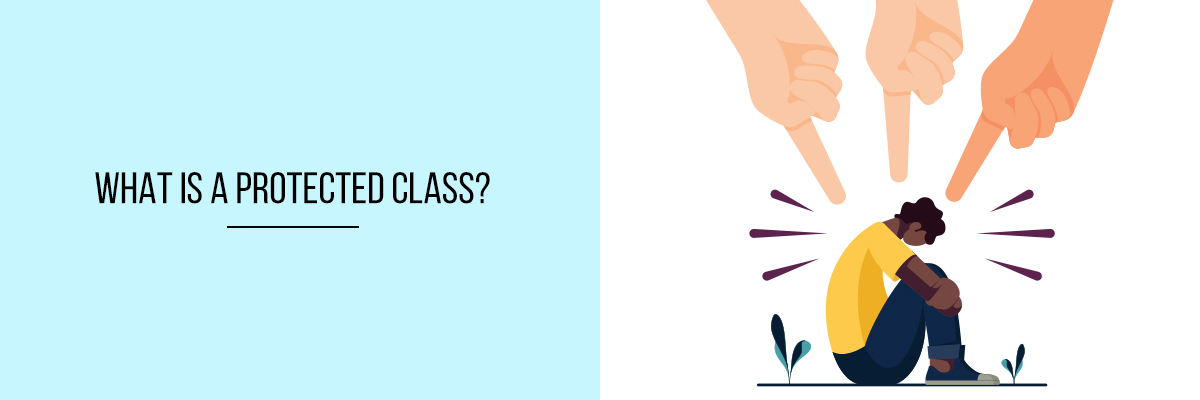Discrimination, hate, and bias unfortunately affect certain groups in every society more than others. These groups are often vulnerable to unfair treatment due to various factors such as their identity, background, or circumstances. To better understand this issue, we can categorize society into two broad classes: those who are at risk of being discriminated against and those who may perpetuate such discrimination.
In democratic nations, every citizen is granted equal rights under the law, emphasizing that no one is inherently superior or inferior. However, as mentioned earlier, some sections of society remain more vulnerable and require additional support to ensure their rights are upheld. These individuals are often referred to as “protected people” or “protected classes.”
Discrimination can take many forms, affecting people in diverse ways, which is why societies recognize and categorize these protected classes to provide targeted protections. In the sections that follow, we’ll explore these groups in greater detail and understand why such protections are necessary.



Protected Classes: Who Are They?
Discrimination, hate, and bias can target various groups of people for different reasons. These affected groups are collectively referred to as protected classes. A protected class is a group of individuals legally safeguarded against harassment, discrimination, and harm—whether physical, mental, or emotional. These protections are meant to prevent unfair treatment resulting from discriminatory practices, behaviors, policies, or laws.
Protected classes include individuals who may face discrimination based on characteristics such as race, gender, disability, sexual orientation, and age. These individuals are protected by both state and federal laws in the United States. Additionally, many companies and organizations today implement their own policies and codes of conduct to further safeguard these groups and ensure equality and inclusivity.
Discrimination vs. Harassment
While both discrimination and harassment involve unfair treatment, they differ in their nature, scope, and how they affect individuals—particularly those belonging to protected classes. Understanding these differences is crucial in recognizing how legal protections apply to each.
- Discrimination:
Discrimination occurs when an individual or group is treated unfairly or denied opportunities based on characteristics that place them in a protected class, such as race, gender, age, or disability. This unfair treatment can manifest in various forms, including:
-
- Denying someone a job or promotion based on their identity.
- Unequal pay for individuals performing the same work.
- Denying an employee a salary increment because of their religion.
- Refusing services, housing, or education to someone because of their race, religion, or national origin.
Discrimination is often systemic, involving policies, practices, or behaviors that create barriers for individuals in protected classes. Anti-discrimination laws, like Title VII of the Civil Rights Act of 1964, aim to address these inequalities and promote fairness in areas such as employment, education, and public accommodations.
- Harassment:
Harassment refers to unwelcome behavior—whether verbal, physical, or visual—that creates a hostile, intimidating, or offensive environment for an individual, particularly those in a protected class. Unlike discrimination, which is often tied to decisions or policies, harassment focuses on behaviors, including:
-
- Offensive jokes or slurs targeting a person’s race, gender, or disability.
- Unwanted advances or sexual harassment.
- Displaying derogatory images or symbols.
Harassment can be a form of discrimination if it targets individuals based on protected class characteristics, but it typically centers on ongoing actions that harm the individual emotionally or psychologically. Laws like the Equal Employment Opportunity Commission’s guidelines ensure that harassment based on protected characteristics is prohibited in the workplace.
What Classes Are Not Protected?
Certain groups are not recognized as protected classes under anti-discrimination laws. This means they are not legally shielded from unfair treatment in the same way as groups defined by race, gender, or other protected characteristics. Examples include:
- Income Level:
People categorized by socio-economic status, such as “low-income” or “middle class,” are not protected under the law. While economic disparities exist, these classifications are not tied to immutable traits or systemic oppression in the same way as protected classes. - Educational Attainment:
Discrimination based on education level, such as having a high school diploma versus a college degree, is not prohibited. Employers can legally make decisions based on educational qualifications unless it indirectly discriminates against a protected class. - Criminal History:
Individuals with a criminal record are not a protected class under federal anti-discrimination laws. While some states and local governments have enacted policies like “ban the box” to reduce hiring biases, criminal history is not a federally protected characteristic. - Undocumented Immigrants:
Those without legal immigration status are not included under federal anti-discrimination protections. Immigration status is governed by separate legal frameworks, and protections typically extend only to documented workers. - Lifestyle Choices and Personal Preferences:
Characteristics like dietary preferences, hobbies, or personal lifestyle choices (e.g., choice of clothing or tattoos) are not legally protected unless they overlap with a protected class, such as religious beliefs.
Which Classes Are Protected Under Federal Law?
- Race
- Color
- National Origin
- Sex (including gender identity and sexual orientation)
- Disability
- Age (40 or older)
- Religion
- Genetic Information
- Citizenship Status (in certain cases)
Who Is Responsible for Enforcing Anti-Discrimination Laws?
At the federal level, the Civil Rights Division of the U.S. Department of Justice is responsible for enforcing anti-discrimination laws. Specifically, the Equal Employment Opportunity Commission (EEOC) ensures compliance with these laws, particularly in employment-related matters. Together, these agencies play a crucial role in safeguarding the rights of individuals in protected classes, ensuring they are treated fairly and equitably across all areas of society.
How Employers Can Protect the Rights of Protected Classes in the Workplace
Employers can play a key role in safeguarding the rights of protected classes within the workplace by implementing inclusive policies and practices. To ensure compliance with anti-discrimination laws, employers should:
- Create and Enforce Anti-Discrimination Policies: Develop clear policies that prohibit discrimination and harassment based on protected characteristics like race, gender, disability, and age. Ensure these policies are communicated to all employees.
- Provide Training and Education: Conduct regular training sessions on diversity, equity, and inclusion. This helps raise awareness of discrimination and harassment issues, promoting a more respectful and inclusive work environment.
- Promote Equal Opportunity: Ensure that hiring, promotions, and compensation are based on merit, not biased factors. Use objective criteria to assess job candidates and evaluate employees’ performance.
- Offer Reasonable Accommodations: For employees with disabilities, employers must provide reasonable accommodations to enable them to perform their job duties effectively, as required by law.
- Encourage Reporting and Address Complaints Promptly: Establish a confidential and effective process for employees to report discrimination or harassment. Employers should take immediate action to investigate complaints and take corrective measures if necessary.
- Foster an Inclusive Culture: Beyond policies, employers should work to create a culture of respect and inclusion, where all employees, regardless of their background, feel valued and supported.
By actively taking these steps, employers can help create a safer, more equitable workplace for all, ensuring that the rights of protected classes are respected and upheld.
Conclusion
Protecting the rights of individuals in protected classes is essential to creating an equitable and just society. Discrimination and harassment remain significant challenges, but by understanding the characteristics that define protected classes and recognizing the legal safeguards in place, we can foster inclusivity.
Employers play a crucial role in this process by enforcing anti-discrimination policies, promoting equal opportunities, and cultivating a respectful and supportive workplace culture. Ultimately, ensuring the protection of these individuals not only upholds their rights but also contributes to a more harmonious and fair society for all.


